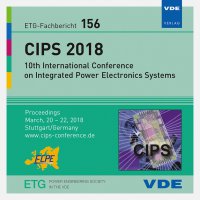Effects of different working frequencies on the joint formation in copper wire bonding
Konferenz: CIPS 2018 - 10th International Conference on Integrated Power Electronics Systems
20.03.2018 - 22.03.2018 in Stuttgart, Deutschland
Tagungsband: CIPS 2018
Seiten: 6Sprache: EnglischTyp: PDF
Persönliche VDE-Mitglieder erhalten auf diesen Artikel 10% Rabatt
Autoren:
Schemmel, Reinhard; Althoff, Simon; Sextro, Walter (University of Paderborn, Chair of Dynamics and Mechatronics, Germany)
Unger, Andreas; Hunstig, Matthias; Broekelmann, Michael (Hesse GmbH, Paderborn, Germany)
Inhalt:
Ultrasonic wire bonding is used to connect the electrical terminals of semiconductor modules in power electronics. Multiple influencing factors in wedge/wedge bonding are known and extensively investigated. A constructively settable but rarely examined parameter is the bonding frequency. In case of bonding on challenging substrates, e.g. supple substructures, a high influence of the working frequency is observed. The choice of the working frequency is typically based on experimental investigations for a certain component or substrate and needs to be evaluated anew for new applications. A profound understanding of the influence of the working frequency is required to achieve a reliable bond process and a short process development. Here a generalized model for the numerical simulation of the bond formation with respect to the dynamics of the substructure is presented. The simulation results are compared to experiments using 300 mm copper wire at different working frequencies and geometries of the substructure.


